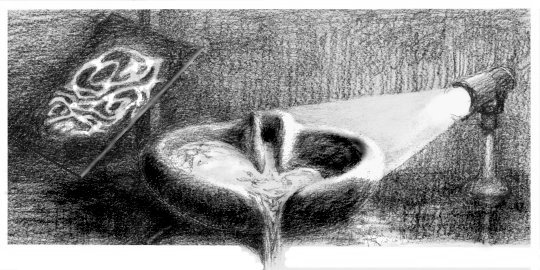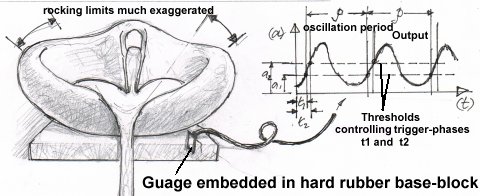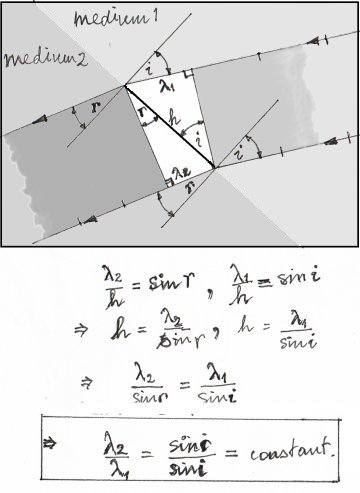This notion is often ridiculed and rejected by orthodox scientists,
usually on the basis of thermodynamics.
The thermodynamic view is that water is particulate (that is to say, divided into parts, spatially). Each of these particles (‘molecules’) is supposed to have mass, position, velocity and acceleration. The acceleration is the result of mechanical force(1) working on the particle, and each particle is supposed somehow to have gathered that work to itself as energy.
The notions of “order” and “information” are important here.
Order
Any arrangement of things is an order, and a different arrangement of the same things is a different order.- There is no intrinsic reason to favour any one order over any other. There may be extrinsic reasons.
- There cannot be two orderings of the same things at once.
Thus, a change of order of the
same things takes Time—and thus Time gets into the act, and becomes a player: it comes via the preservation of thingness.
I would be inclined to call this preservation, “objective integrity”, as there are objects that do not change: for example, a particle always has a velocity. (Zero velocity is not no velocity. It is an extant velocity, with a value of zero. Also, we may be rather sure that a velocity-of-zero with respect to one thing, is not a velocity-of-zero with respect to everything. The absolute absence of a velocity would require the absolute absence of its particle.) “Thingness” is binary: a thing is either absolutely present, or it is absolutely absent,
So let us specify an order for
all the variables at time t, and call
it “the ordered state”, St. We might,
for example,
want to have 80% of the molecules moving in the same direction and
sense.
If the next state, St+δt, at the later time t+δt, is different from St,,
then this new state, St+δt, is
automatically, by definition, “disordered”.
If one or more velocities of St are not zero, the next state, St+δt , of the vectors must differ from the ordered state, St.
It follows that order must proceed to disorder.
Now, how is one to assess the degree of disorder, and its rate of change? There would need to be a way to compare successive states. For this, information about the states would be needed.
Information

We see that right from the start, statistical mechanics, and its application to thermodynamics, is, by conscious, deliberate definition,
- not determinate and predictive, but
- indeterminate and probabalistic.
The degree of disorder mentioned above is by this definition to be understood as the negative of the amount of information as Wiener defines it. This quantity is Entropy.
The suppositions may be correct, but the hypothesis that all this supposition is intended to support has not, to my knowledge, been rigorously tested.
The study suggested here, of water flow in flow forms, may offer a test.
Water moving in a flow-form
appears to be acted on at the macroscopic levelby mechanical forces in addition to those
at the microscopic level considered by
statistical mechanics and thermodynamics.
Gravity is surely at work,
and there are certainly periodic forces
associated with wave-creation and propagation.
Electrostatic forces, from friction between
water and flow-form, can be expected.
Resonance seems very much in evidence.

The sketch above attempts to depict a way to study the behaviour of the surface of water oscillating through a flow-form.
The light source should be small, and bright, and shine its light on the water's surface in such a way that its reflection from the surface are caught as a light-pattern on a translucent screen. This will allow the pattern to be photographed from behind the screen by a camera set normal to it, which should eliminate perspective problems.
I guess that the pattern is bright where light has reflected from the surface, and dark where light has refracted down into the body of the water, which, according to ordinary physics, has all to do with the critical angle, which in turn implies that we are having as much to do with the orientation of planes—those “osculating” ( kissing! ) planes that are supposed to be tangent to the water's surface—as we are with position.
It may be that we will have to do with both of the polar aspects of the surface.
A Caveat
We need to bear in mindthat a surface is a mathematical entity.
By definition, surfaces are continuous.
But we are positing that a mathematical entity
can interface particulate, physical media,
which by definition are discontinuous.
We should therefore be prepared
to entertain the serious possibility
that such a mathematical surface
cannot physically exist.
Strobed Samples
The material bulk of a flow form – its stone, clay, ceramic or composite – is not intended by design to move in response to the water oscillating between its basins, but it must move, to some degree.If a strain-guage were to be used to detect this inevitable movement—which would be as rhythmic as the water's movement, and share its periodicity—its output could, conceivably, be arranged to trigger a photograph at a specified moment in each swing-cycle. This would in effect be strobing the water's pattern. An arrangement like the one in the diagram below might work.

The pattern does not appear to the eye to repeat exactly, but it may nearly do so, in the sense that the samples might change from one to the next in some regular, incremental fashion, a bit like precession—or the changes might be chaotic, which, it must be stressed, does not imply that they are random (i.e., stochastic).
Strobed sampling should cast some light (sic) on the issue.
Interpretation of the Patterns (1)
Which geometry applies? Does any apply?
Light is often said to radiate: it is thought to travel as “rays”, which are lines, and to come from a source, or centre, which is a point.In other words, light is conflated with geometry and number, despite the fact that neither geometry nor number is light. Curious juxtapositions, like this one, of concept and phenomena are ubiquitous in physics, and rife in exact science generally.
Geometry may have some kind of incidence with light,
but, if it does, it's for sure that
we do not yet know what kind that is.(2)

i and r are angles, of incidence and of refraction, respectively.
There is some geometry here, but it is not pure projective geometry, and there is a lot of Euclid, without which, of course, there could be no associated, numeric mathematics (i.e., the trigonometry)—but conspicuously absent from the diagram are the actual light, and the actual media, under discussion.
So a strip of plane, as noted, is our light. But that strip is just a device to allow the common hypotenuse (h, in the diagram) of two right-angled triangles to exist, because that hypotenuse is needed to facilitate a bit of trigonometry involving those triangles.
This trigonometry eventually produces a constant ratio of sines–which is a number–and presumably we are to infer that the light/media combination produces such a ratio, too, for all that these components are neither geometric elements, nor numbers.
Interpretation of the Patterns (2)
- Mechanical force has several possible origins (electromagnetic, gravitational, ...) but force itself seems to be the same whatever its origin. In other words, force itself contains no information about the nature of its source. Why not?
- However, an extremely promising beginning was made by NickThomas.